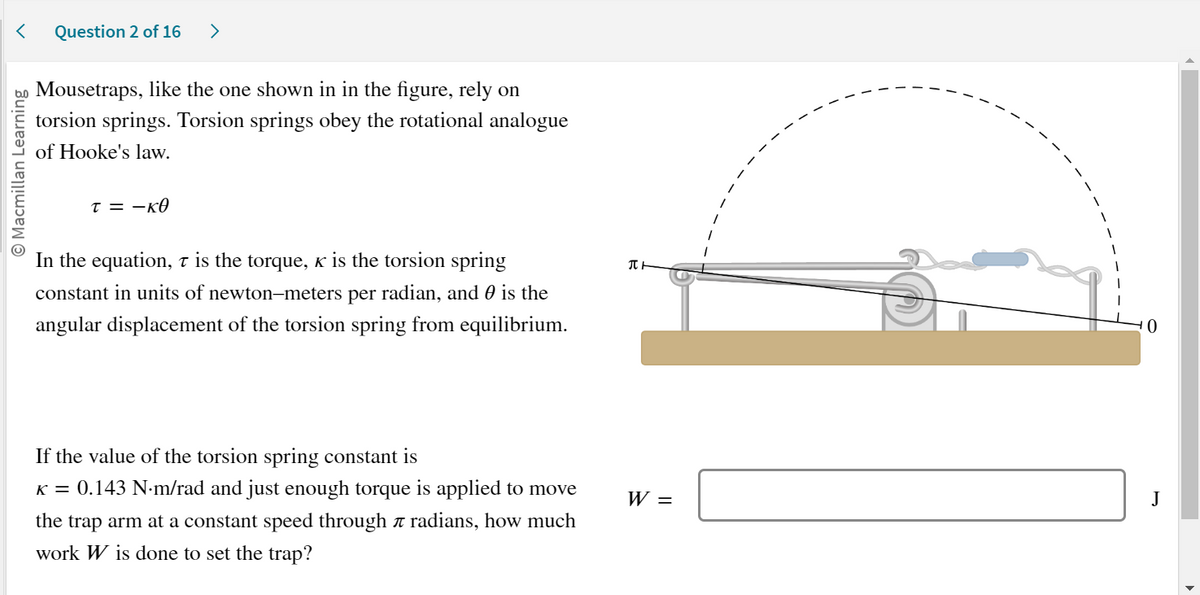< Question 2 of 16 > Macmillan Learning Mousetraps, like the one shown in in the figure, rely on torsion springs. Torsion springs obey the rotational analogue of Hooke's law. T = -KO In the equation, τ is the torque, & is the torsion spring constant in units of newton-meters per radian, and is the angular displacement of the torsion spring from equilibrium. If the value of the torsion spring constant is K = 0.143 N.m/rad and just enough torque is applied to move the trap arm at a constant speed through a radians, how much work W is done to set the trap? π W = 0 J
Simple harmonic motion
Simple harmonic motion is a type of periodic motion in which an object undergoes oscillatory motion. The restoring force exerted by the object exhibiting SHM is proportional to the displacement from the equilibrium position. The force is directed towards the mean position. We see many examples of SHM around us, common ones are the motion of a pendulum, spring and vibration of strings in musical instruments, and so on.
Simple Pendulum
A simple pendulum comprises a heavy mass (called bob) attached to one end of the weightless and flexible string.
Oscillation
In Physics, oscillation means a repetitive motion that happens in a variation with respect to time. There is usually a central value, where the object would be at rest. Additionally, there are two or more positions between which the repetitive motion takes place. In mathematics, oscillations can also be described as vibrations. The most common examples of oscillation that is seen in daily lives include the alternating current (AC) or the motion of a moving pendulum.

Trending now
This is a popular solution!
Step by step
Solved in 2 steps with 2 images









